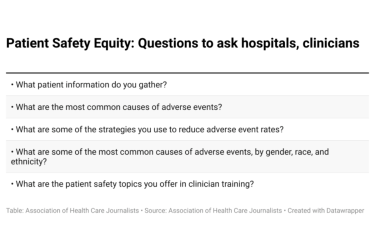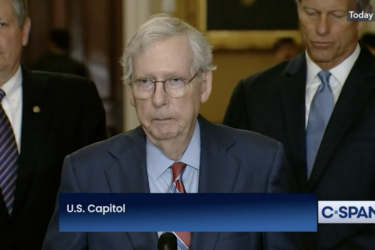
May is Older Americans Month, which coincides with the Administration for Community Living’s annual profile of Americans over age 65. Their most recent report, Profile of Older Americans, 2014, tracks trends in aging from 2003 through 2013.
Not only is the data itself interesting – did you know nearly 70,000 Americans were over age 100 in 2013? – but the report provides a wealth of angles reporters can localize to advance discussion of aging issues in their community.
Over the past 10 years, the 65-plus population has grown by almost 25 percent, from 35.9 million in 2003 to 44.7 million in 2013. In 20 states, it’s climbed by as much as 30 percent, according to the report, and in Nevada and Alaska the increase is more than 50 percent. By 2060, the older population is projected to more than double nationally, to 98 million.
Adding to the potential impact of this demographic shift: More older adults are living below the poverty level. In just one year, from 2012 to 2013, there was a statistically significant 0.4 percent increase in the number of adults 65 years and older at this benchmark. When the supplemental poverty level is factored in, the 2013 poverty rate for older adults is closer to 15 percent.
Here are highlights of the report’s national trends. Use the data to compare trends in your city, town or state. The AGID database can help you filter specific criteria and even map aging “hot spots.”
Population
- About one in every seven, or 14.1 percent, of the population is an older American.
- Those who reach age 65 have an average life expectancy of an additional 19.3 years (20.5 years for females and 17.9 years for males).
- There were 67,347 people age 100 years or older in 2013 (0.15 percent of the total 65-plus population).
- Older women outnumber older men at 25.1 million older women to 19.6 million older men.
- The 85-plus population is projected to triple from 6 million in 2013 to 14.6 million in 2040.
Ethnicity/race
In 2013, 21.2 percent of those 65 years and older were members of racial or ethnic minority populations.
- 6 percent were non-Hispanic African-Americans.
- 9 percent were non-Hispanic Asian or Pacific Islander.
- 5 percent were Native American (not Hispanic).
- 1 percent were Native Hawaiian/Pacific Islander (not Hispanic).
- 7 percent of those 65-plus identified themselves as being of two or more races.
- Those of Hispanic origin (of any race) represented 7.5 percent of the older population.
Racial and ethnic minority populations have increased from 6.3 million in 2003 (17.5 percent of older adults) to 9.5 million in 2013 (21.2 percent of older adults). They are projected to increase to 21.1 million in 2030 (28.5 percent of older adults).
Living arrangements
- Older men were much more likely to be married than older women — 72 percent of men vs. 46 percent of women.
- In 2014, 35 percent of older women were widows.
- About 28 percent (12.5 million) of non-institutionalized older people lived alone (8.8 million women, 3.8 million men).
- Almost half of older women (46 percent) age 75 years or older live alone.
- In 2013, about 536,000 grandparents aged 65 years or older more had the primary responsibility for their grandchildren who lived with them.
Income
- The median income of older adults in 2013 was $29,327 for males and $16,301 for females. Median money income (after adjusting for inflation) of all households headed by older people rose by a statistically significant 3.7 percent between 2012 and 2013.
- Households containing families headed by adults 65 years or older reported a median income of $51,486 in 2013.
- The major sources of income as reported by older adults in 2012 were Social Security (reported by 86 percent), income from assets (reported by 51 percent), private pensions (reported by 27 percent), government employee pensions (reported by 14 percent), and earnings (reported by 28 percent).
- Social Security constituted 90 percent or more of the income received by more than one-third (36 percent) of beneficiaries in 2012 (22 percent of married couples and 47 percent of non-married beneficiaries).
- Over 4.2 million older adults (9.5 percent) were below the poverty level in 2013. This poverty rate is statistically different from the poverty rate in 2012 (9.1 percent).
- In 2011, the U.S. Census Bureau also released a new Supplemental Poverty Measure which takes into account regional variations in the livings costs, non-cash benefits received, and non-discretionary expenditures but does not replace the official poverty measure.
- In 2013, the SPM shows a poverty level for older adults of 14.6 percent (more than 5 percentage points higher than the official rate of 9.5 percent). This increase is mainly due to including medical out-of-pocket expenses in the poverty calculations.
Questions to ask
Does your community fit this profile or is it an outlier? What programs or services are in place to support an aging population? From housing to economic insecurity to health costs, how does your city or state plan to address the needs of its aging population?











